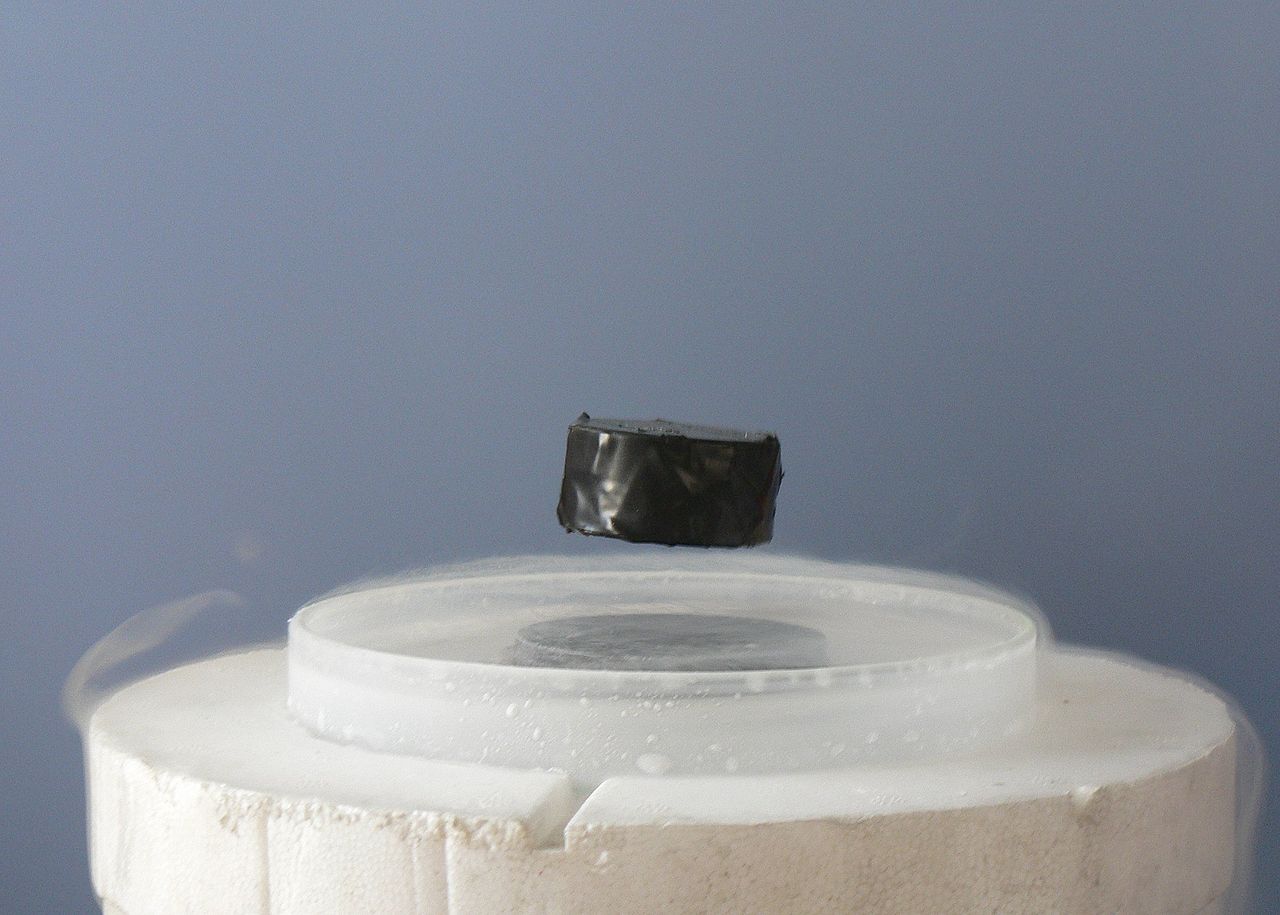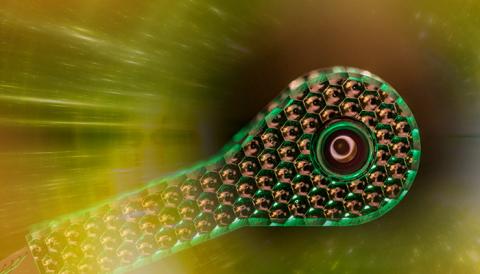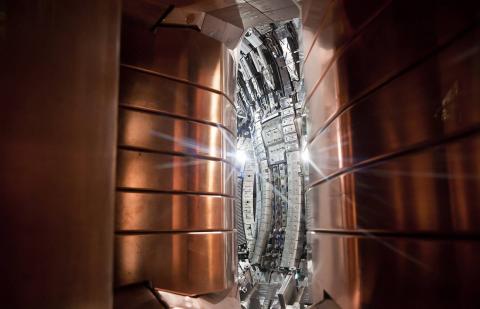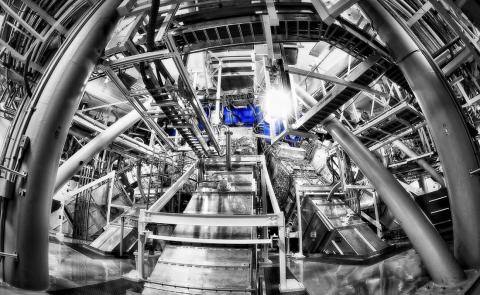Reactions: A study still pending review announces the first superconductor at room temperature and pressure
A team of South Korean researchers claims to have achieved a superconductor at room temperature and pressure for the first time in history. If true, it would mean a revolution in physics with implications for the whole of society. The material, called LK-99, is based on a copper-doped lead apatite framework. The article is a preprint and can be read in the ArXiv repository, where the research community shares their work before it is reviewed for publication in a scientific journal.
Several teams have tried to reproduce the LK-99 experiment and agree that the material is not a superconductor

Leni Bascones - superconductor ambiente
Leni Bascones
Tenure scientist, PhD in Physics, specialising in superconductors, Instituto de Ciencia de Materiales de Madrid (CSIC).
The discovery of a superconductor at room temperature and pressure is one of the greatest achievements that could be expected, even if its usefulness in real applications might depend on the characteristics of such a superconductor.
The search for high-temperature superconductors has historically been fraught with false positives, including article retractions, which makes us especially wary of any discovery of a new high-temperature superconductor. Any claim of such a discovery must be accompanied by very robust measurements and careful data handling. This week two papers have appeared in the arXiv preprints database (2307.12008 and 2307.12037) claiming to have found a superconductor, at ambient pressure at temperatures above 100°C, which they call LK-99. Two of the authors are authors of both articles.
By comparison, the known room-pressure superconductor of the highest critical temperature (the temperature at which it becomes superconducting) superconducts only below about -135º, although at high pressures some do so at higher temperatures. In a superconductor the resistance to electric current is cancelled out and magnetic fields are expelled. The measurements shown by the authors show that above 100º there is a transition in the system.
In my opinion, the results are not sufficiently convincing that the state they observe at lower temperatures is superconducting, both because of the lack of measurements of resistivity and magnetic susceptibility over a wider temperature range, and because of the way these quantities, in particular resistivity, depend on temperature. It is necessary to wait for other groups to make more careful studies of this material.
The theoretical and data analysis in the second article is, in my opinion, particularly bold, discussing a metal-insulator transition without giving the most basic material information, which would be the band structure, guessing at important superconducting information, such as the symmetry of its order parameter, from measurements from which it is difficult to obtain this information, and including statements that are not correct.
Amalia Coldea - superconductor EN
Amalia Coldea
Associate Professor of Quantum Materials, University of Oxford
Witnessing discoveries in a newly synthesized quantum material is very exciting as nature reveals new phenomena that need to be understood. The initial observations always require diligent verification and reproducibility following the scientific method. We live in an era in which, more than ever, reliable and trusted research are pivotal to the progress in science.
A recent manuscript on the potential room temperature superconductivity was reported on the arXiv:2307.12037 and it was also published on 30 April 2023.
While the presented results are potentially exciting, the presentation and the analysis of the results should be improved and all measurements need to be verified. Only when the experimental results are verified by many groups around the world we would be ready to embrace the long-sought room temperature superconductivity.
Toby Perring - superconductor EN
Toby Perring
Senior Scientist at the STFC Isis Neutron and Muon Source
If corroborated this would certainly be a very exciting discovery: room temperature superconductivity well above room temperature at ambient pressure has never been observed before. Of course, extraordinary claims require extraordinary evidence, and it is important that the time-honoured process of independent peer review of the authors’ submissions to the preprint server is followed. For the discovery to be accepted other research groups must be able to synthesise the material and reproduce room temperature superconductivity, while eliminating other physical phenomena that might have resulted in similar experimental signatures.
Susannah Speller y Chris - superconductor EN
Susannah Speller
Professor of Materials Science at the University of Oxford
Chris Grovenor
Professor of Materials at the University of Oxford
The recent preprint by Lee, Kim and Kwon suggesting that they have observed room temperature superconductivity in the copper doped lead phosphate system, without the need for very high applied pressures, is interesting, but not yet wholly convincing. The data presented showing a sharp drop in bulk resistivity suggests an abrupt phase transition around 100 oC, but whether this is a result of the formation of a superconducting state is not clear. A similarly sharp transition in the magnetisation signal would be expected at the same temperature if a significant volume of the sample has become superconducting, as well as an anomaly in the specific heat capacity. Neither of these features is evident in the data presented, and so it is too early to say that we have been presented with compelling evidence for superconductivity in these samples. It will be interesting to see if other laboratories can repeat and improve on these preliminary observations.
Mohammad Yazdani-Asrami - superconductor EN
Mohammad Yazdani-Asrami
Lecturer of the University of Glasgow’s James Watt School of Engineering
A real, working room-temperature superconductor which works at ambient pressure would be one of the holy grails of modern physics, unlocking major new developments in energy, transportation, healthcare, and communications.
As it stands, however, the paper is not yet peer-reviewed and has not yet been tested in other labs to see if other researchers can reproduce its results. These are both key to determining for sure whether the world should be getting excited about the authors’ claims, which need much more scrutiny at this early stage. If the claims of findings are approved, perhaps, this is one of the most significant achievements of last few decades in physics and material engineering.
Even before those standards are applied, the published results show that the critical current, in-field performance, and mechanical properties of the new material need improvement, to make it useful for energy and transport sector applications, in devices such as cable, motors, and transformers, and magnets in fusion industry. However, achieving this superconducting phase at ambient pressure is already a significant achievement which should be valued.
Even though this work lit a glimmer of hope for all of us within the superconductivity community and beyond, much more work needs to be done to verify and explore the results. I will watch the developments with keen interest.
Stuart Bradley - superconductor EN
Stuart Bradley
Principal Engineer (Power Electronics and Electrical Machines), WMG at The University of Warwick
“There are some further considerations for the research. For example, it is not clear how electrical frequency affects the resistance.
There are lots of impacts of the research. Superconductivity at room temperature and pressure would mean that the electricity transmission system could be smaller and possibly cheaper – and conduction losses would be zero, therefore improving efficiency. The national grid loses energy in the long, high-voltage lines. This would allow further electrification within the UK, but also a much larger interconnection between nations – such as Morocco to UK or Iceland to UK to import zero carbon renewable energy.
The advances in the field could also help electrical machines become more efficient and smaller; electrical machines such as wind turbine generators could be much smaller and would be limited by mechanical design rather than electromagnetics. Moreover, the design flexibility of having much smaller machines might help their applications such as aerospace or robotics. Electrical devices such as sensors (like medical scanners) could also be smaller, less intrusive and cheaper.
The implications don’t stop there. Magnetic fields for industrial processes could be more commercially viable – such as induction heating for iron and steel making. Energy storage and grid support (for voltage and frequency variation) is cheaper and can be distributed, meaning that more renewables can be connected to the grid. Computing might be made with little loss, or at higher speeds. Quantum computing might take advantage of the zero loss too – and perhaps data storage might be faster too.
Sukbae Lee et al.
- Research article
- Non-peer-reviewed
- Preprint



